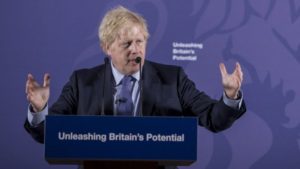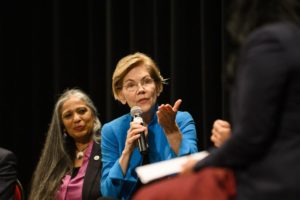
At the time of writing this piece, I just mailed in my ballot for the 2018 midterm elections, voting in Missouri, which is currently home to the closest Senate election this cycle. Across the media-political spectrum, the polling averages on the race between Democratic incumbent Claire McCaskill and Republican challenger Josh Hawley have the race inside of one point. Other close elections inside of the polling margin of error, according to Real Clear Politics and FiveThirtyEight, include Florida, Indiana, Montana, Arizona, and Nevada.
However, the race that has taken the nation by storm is the Texas senate race between incumbent Republican Ted Cruz, the second place candidate in the 2016 Republican Presidential primary, and Democratic challenger Beto O’Rourke. According to opensecrets.com, $96 million in total have been raised by the two campaigns and will likely eclipse the century mark by election day. That $96 million tally means this Senate race has more than doubled the previous fundraising record for a U.S. Senate race, a mark set in 2016 in a Pennsylvania election at $46 million. The total money spent in that race, however, according to marketwatch.com, was $162 million, meaning spending from sources outside of the campaigns themselves came in at $120 million. There are no official numbers yet on Super-PAC spending in the Texas race, but it is a fair assumption to make that this race will leave that Pennsylvania race, a race decided by a little more than one point, in the dust.
What makes the Texas race special and why is it such an anomaly? Well, for starters, Ted Cruz is considered by many on the American left to be an even worse political figure than Donald Trump. This animosity combined with the chance for Democrats to flip a state which has stood as the bastion of the Republican party for the past 50 years had the whole party rally around a charismatic political upstart in Beto O’Rourke. If O’Rourke can pull flipping the state, it may go down as one of the largest political upsets in history. The problem with the Democratic strategy, however, is similar to the losing effort in the 2016 Presidential campaign. According to FiveThirtyEight, O’Rourke only has a 20 percent chance of winning on November 6th with Ted Cruz leading the Real Clear Politics polling aggregate by seven points. The most expensive Senate race in U.S. history is already largely decided and the $25 million that both campaigns have on hand combined, will likely do nothing to move the needle.
Of the three Senate races inside of one point, the only one to be within the top 8 of the 35 total senate races this cycle in terms of campaign fundraising is the Missouri Senate race. Arizona and Nevada have flown under the radar, even though those two seats will likely go a long way to setting the Senate political map for the next two and even four years. The Texas race, in which both candidates have vowed to spend all of their campaign funds, is not within the top 10 most competitive races in 2018. The strategy by Democrats to fund this race over more competitive races is reminiscent of the 2016 election when millions of dollars were spent trying to flip the state of Texas and many critics argue not enough focus was put on the rust belt by the Clinton Campaign. This continued illusion of flipping Texas may one day come true as Texas’s racial demographics become more Hispanic, but until that day, every dollar spent in Texas is one less dollar spent by the Democratic party in more competitive races. That is why the Republicans will hold the Senate in 2018.
—Ethan Harper



